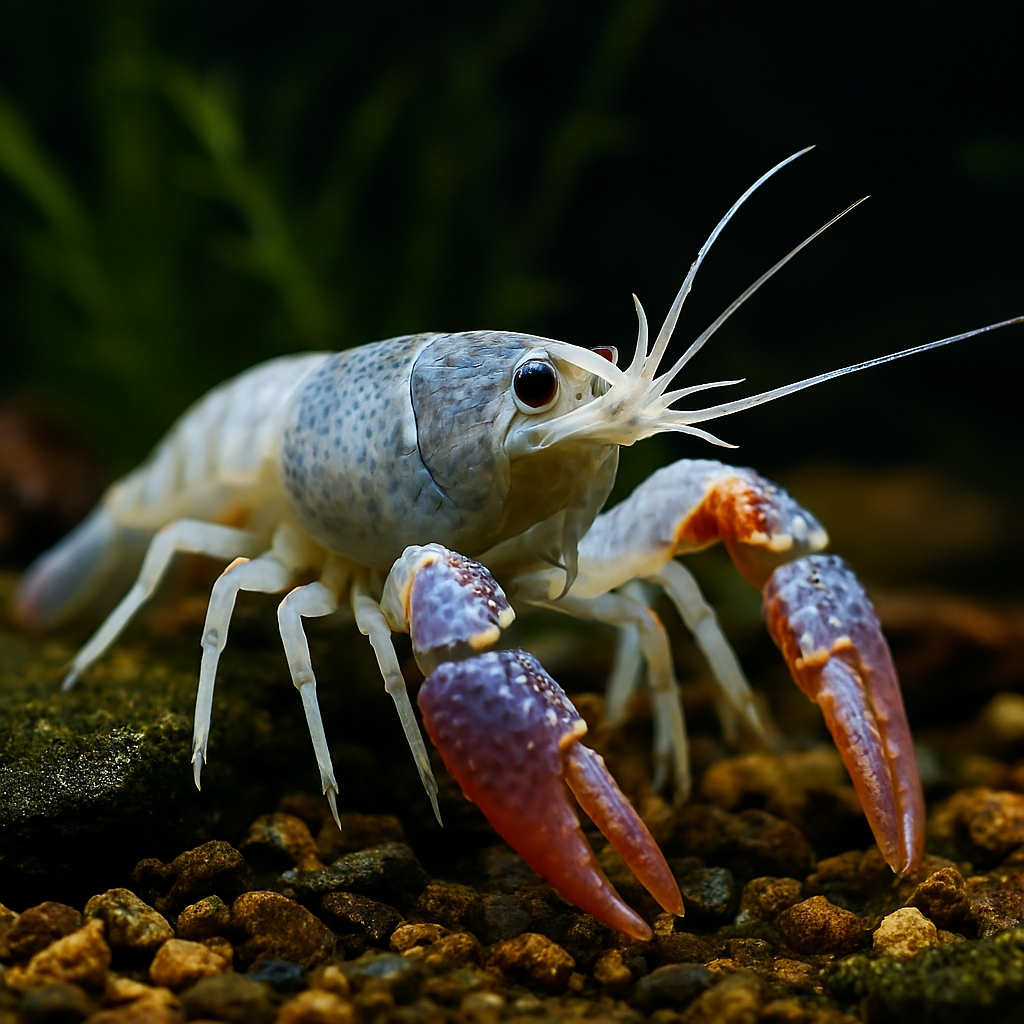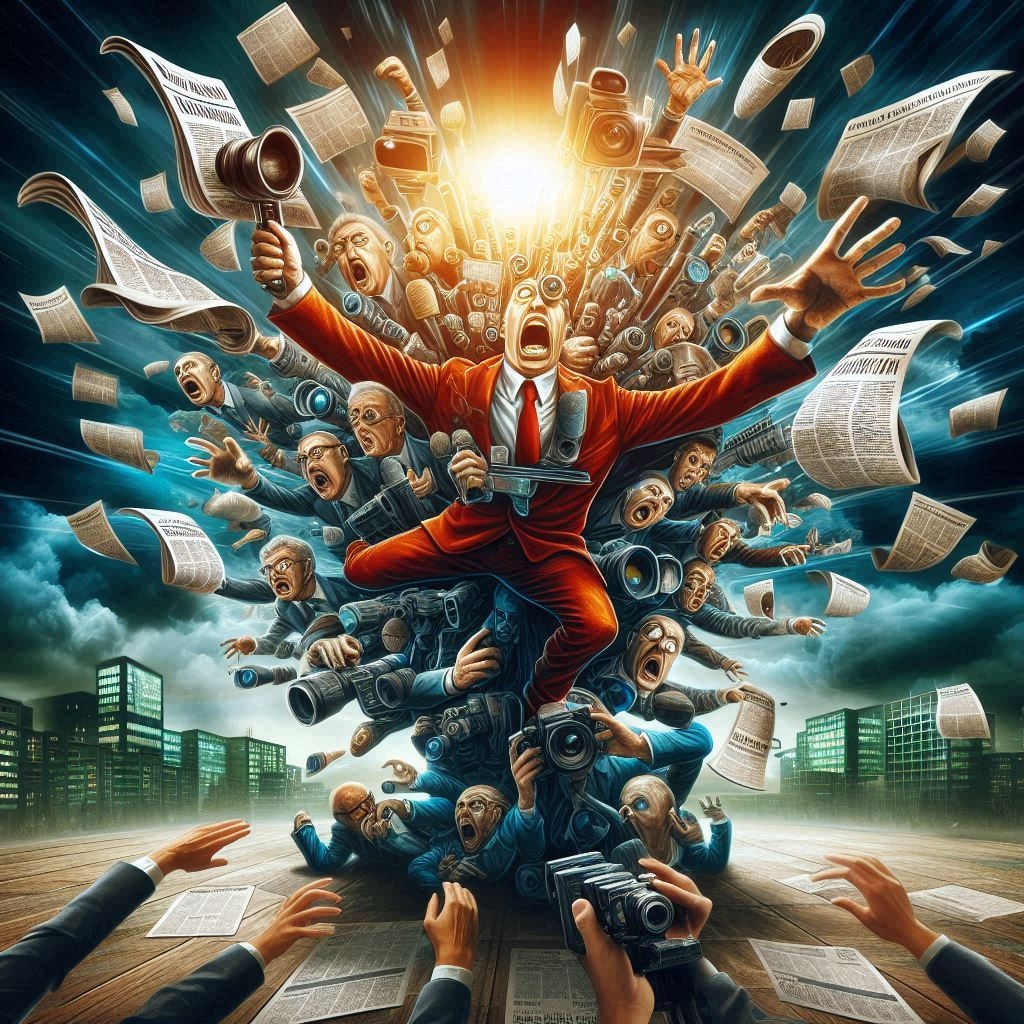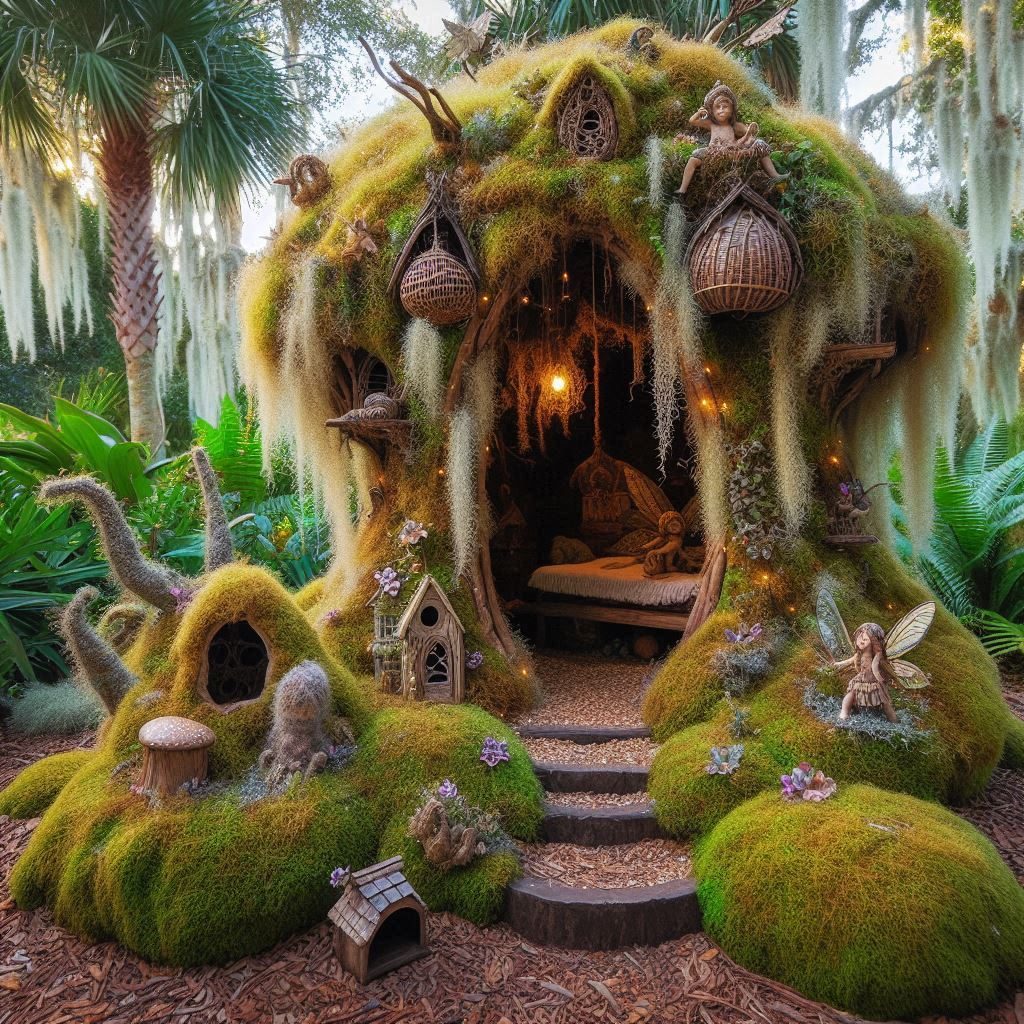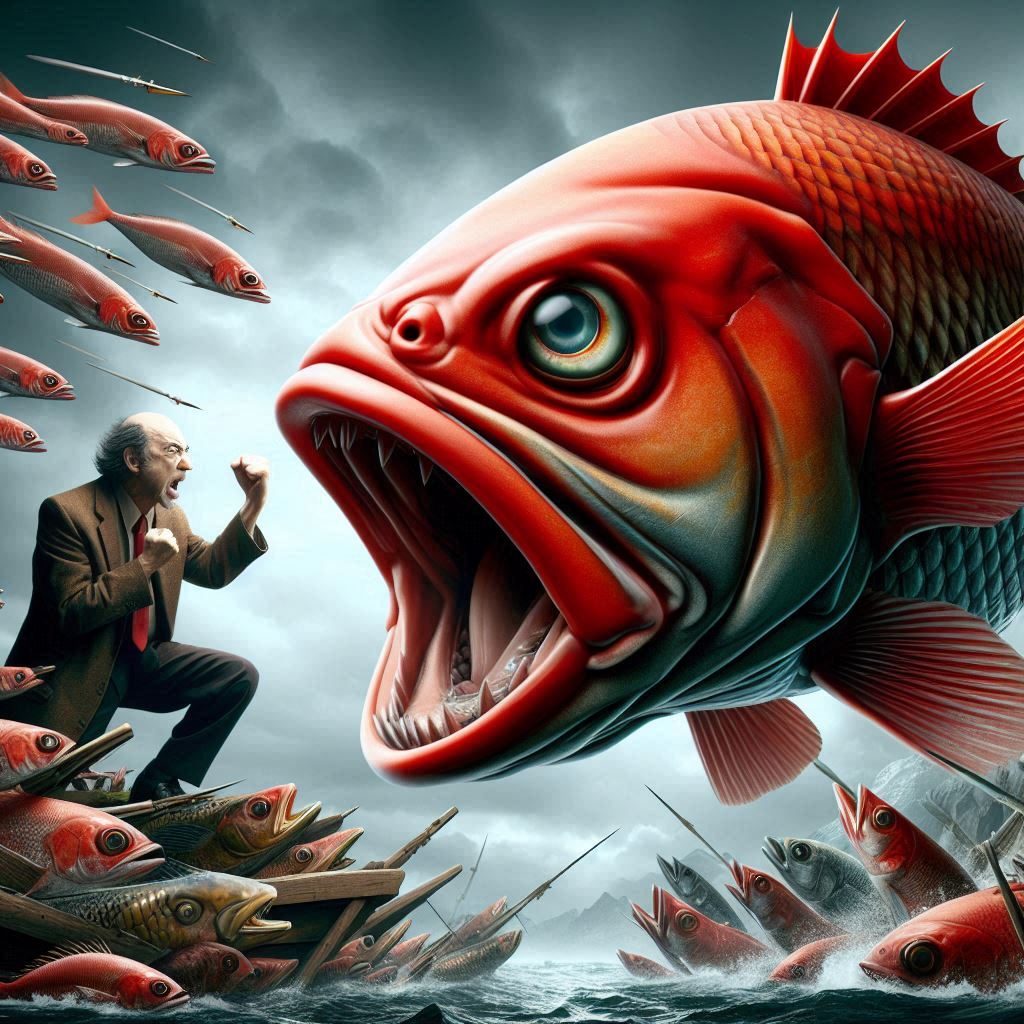Ecodesign: A Pathway to Sustainable Urban Living
————————–
Introduction
In the face of growing environmental challenges, the concept of ecodesign has emerged as a beacon of hope. Ecodesign, or environmentally conscious design, is an approach that minimizes the environmental impact of products and services throughout their life cycle. It’s not just about creating sustainable products; it’s about designing systems that improve our quality of life while preserving the planet.
Ecodesign and Our Waterways
Water is the lifeblood of our cities. However, urbanization and industrialization have put immense pressure on our waterways. Ecodesign can help alleviate this pressure by promoting the use of green infrastructure.
Green infrastructure, such as rain gardens and permeable pavements, can reduce stormwater runoff, filter pollutants, and replenish groundwater supplies. This not only protects our waterways but also enhances urban biodiversity and creates aesthetically pleasing spaces.
Transforming Our Cities
Ecodesign can also transform the way our cities function. By integrating nature into urban planning, we can create cities that are not only sustainable but also resilient and livable.
For instance, green roofs and walls can reduce energy consumption, mitigate the urban heat island effect, and improve air quality. Urban farms can provide fresh produce while reducing food miles. Moreover, well-designed public spaces can encourage active lifestyles and foster community interactions.
Shaping Our Lifestyles
The benefits of ecodesign extend beyond the physical environment. By promoting sustainable practices, ecodesign can influence our lifestyles and consumption patterns.
Consider the concept of a circular economy, which aims to eliminate waste by continually using resources in a closed-loop system. Ecodesign plays a crucial role in this model by designing products that are durable, repairable, and recyclable. This not only reduces waste but also encourages us to value longevity over disposability.
Short-Term and Long-Term Effects
In the short term, ecodesign can lead to immediate improvements in our local environment. Cleaner waterways, reduced air pollution, and enhanced urban green spaces can all be achieved relatively quickly with the right design and implementation.
In the long term, the effects of ecodesign can be transformative. By fostering sustainable consumption patterns and resilient cities, ecodesign can help us mitigate climate change and preserve our planet for future generations. Moreover, it can lead to a shift in societal values, where sustainability and respect for nature become the norm rather than the exception.
Understanding Ecodesign
Ecodesign, also known as environmentally conscious design, is an approach that incorporates environmental considerations into product and process design. It aims to minimize the environmental impact of a product or service throughout its entire lifecycle, from raw material extraction to disposal.
How Does Ecodesign Help?
Ecodesign helps in several ways:
1. Resource Efficiency: By designing products to use less energy and materials, ecodesign promotes resource efficiency.
2. Waste Reduction: Ecodesign strategies such as designing for durability, repairability, and recyclability can significantly reduce waste.
3. Environmental Protection: By minimizing harmful emissions and waste, ecodesign helps protect the environment.
Short-Term and Long-Term Impacts
In the short term, ecodesign can lead to immediate improvements such as cost savings from reduced resource use and waste disposal. It can also enhance a company’s reputation by demonstrating a commitment to sustainability.
In the long term, ecodesign can contribute to sustainable development by reducing the environmental footprint of our consumption and production patterns. It can also drive innovation and competitiveness by encouraging companies to develop new, more sustainable products and services.
Ecodesign, Waterways, and Land
Ecodesign can play a crucial role in protecting and enhancing our waterways and land. For instance, green infrastructure such as rain gardens and permeable pavements can be used to manage stormwater runoff, reducing pollution in our waterways.
In terms of land use, ecodesign principles can guide the development of sustainable urban spaces. This includes creating green spaces that enhance biodiversity, designing buildings that use resources efficiently, and planning cities in a way that minimizes environmental impact.
Ecodesign represents a powerful tool for achieving sustainability in our products, services, and urban environments. By considering the environmental impact at every stage of the design process, we can make a significant contribution to protecting our planet.
The Role of Science in Ecodesign
Science plays a pivotal role in ecodesign, providing the knowledge and tools necessary to understand and address the environmental impacts of products and services.
Understanding Environmental Impacts
Scientific research helps us understand the environmental impacts of different materials and processes. For instance, life cycle assessments (LCAs) use scientific data to evaluate the environmental impacts of a product from raw material extraction to end-of-life disposal. This information is crucial for designers to make informed decisions about materials selection, manufacturing processes, and end-of-life management.
Developing Sustainable Materials and Technologies
Science also drives the development of sustainable materials and technologies. Researchers in fields like materials science and engineering are constantly developing new materials that are more sustainable, such as biodegradable plastics or materials with lower embodied energy. Similarly, advances in renewable energy technologies are making it possible to power manufacturing processes with less environmental impact.
Modeling and Simulation
Scientific modeling and simulation tools can help designers optimize products for environmental performance. For example, computer models can simulate the performance of a product under different conditions, helping designers identify opportunities for energy efficiency or waste reduction.
Monitoring and Evaluation
Finally, science plays a key role in monitoring and evaluating the effectiveness of ecodesign strategies. Scientific methods can be used to measure reductions in energy use, waste generation, or greenhouse gas emissions resulting from ecodesign initiatives. This information is essential for demonstrating the benefits of ecodesign and driving continuous improvement.
Science is integral to ecodesign, providing the knowledge, tools, and techniques needed to design more sustainable products and services. By leveraging scientific insights, we can make significant strides towards a more sustainable future.
Ecodesign: The Role of Individuals, Common Sense, and Environmental Testing
————-
The Power of Individuals
Every individual has a role to play in ecodesign. As consumers, our choices can drive demand for more sustainable products. By choosing to buy products that are designed with the environment in mind, we can encourage companies to prioritize ecodesign.
Moreover, individuals can also contribute to ecodesign by adopting sustainable practices in their daily lives. This could include actions like recycling, composting, conserving water, or using energy-efficient appliances. These actions, while small in isolation, can add up to significant environmental benefits when adopted by many people.
The Role of Common Sense
Common sense plays a crucial role in ecodesign. Many principles of ecodesign align with common-sense practices that have been used for centuries. For example, the idea of designing products to be durable and repairable is a common-sense approach that reduces waste and saves resources.
Similarly, the principle of using local materials wherever possible reduces the environmental impact of transportation and supports local economies. These common-sense practices are often overlooked in our modern, disposable culture, but they are fundamental to the concept of ecodesign.
Environmental Testing Projects
Environmental testing projects are essential for validating the effectiveness of ecodesign strategies. These projects might involve testing new materials or technologies, monitoring the environmental impacts of a product over its life cycle, or evaluating the success of a green infrastructure project.
These testing projects provide valuable data that can inform future ecodesign efforts. They help us understand what works and what doesn’t, allowing us to continuously improve our designs and make more sustainable choices.
Ecodesign is a collective effort that involves individuals, common sense, and rigorous testing. By working together, we can create a more sustainable future.
Ecodesign and the Role of Research & Development
Research and Development (R&D) plays a critical role in the process of ecodesign. It is through R&D that new materials, technologies, and design strategies are developed and tested, paving the way for more sustainable products and services.
Exploring New Materials and Technologies
One of the key areas of focus in ecodesign R&D is the development of new materials and technologies. Scientists and engineers are constantly researching and developing materials that have a lower environmental impact, such as biodegradable plastics or materials made from renewable resources. Similarly, new technologies are being developed to improve energy efficiency, reduce waste, or minimize the use of non-renewable resources.
Life Cycle Assessment
Another important aspect of ecodesign R&D is Life Cycle Assessment (LCA). LCA is a research method used to assess the environmental impacts of a product or service throughout its entire life cycle, from raw material extraction to end-of-life disposal. The insights gained from LCA research can help designers make more informed decisions about materials selection, manufacturing processes, and end-of-life management.
Testing and Validation
R&D also involves testing and validation of ecodesign strategies. This could involve laboratory testing of new materials or technologies, field testing of ecodesign prototypes, or monitoring and evaluation of implemented ecodesign solutions. The data collected through these testing and validation processes is crucial for assessing the effectiveness of ecodesign strategies and for identifying areas for improvement.
Collaboration and Interdisciplinary Research
Ecodesign R&D is often a collaborative and interdisciplinary endeavor. It brings together experts from various fields such as materials science, engineering, environmental science, and design. This interdisciplinary approach allows for a more holistic understanding of the environmental impacts of products and services and fosters innovation in the development of sustainable design solutions.
R&D is a vital component of ecodesign. It drives innovation, informs design decisions, and ensures the effectiveness of ecodesign strategies. Through ongoing R&D efforts, we can continue to advance the field of ecodesign and move closer to our goal of a more sustainable future.
Pros and Cons of Ecodesign
Ecodesign, with its focus on sustainability and environmental consciousness, has the potential to significantly impact our world, land, and waterways. However, like any approach it can take time & it always comes with its own set of advantages and disadvantages and new developments.
Pros of Ecodesign
1. Environmental Protection: Ecodesign reduces the environmental footprint of products and services by minimizing waste, reducing energy consumption, and using sustainable materials.
2. Resource Efficiency: By designing products to be durable, repairable, and recyclable, ecodesign promotes efficient use of resources.
3. Economic Benefits: Ecodesign can lead to cost savings in the long run by reducing resource use and waste disposal costs. It can also open up new market opportunities for sustainable products and services.
4. Improved Quality of Life: Ecodesign can enhance the quality of life by creating healthier, more sustainable living environments. For instance, green infrastructure can improve air and water quality, reduce noise pollution, and provide recreational spaces.
Cons of Ecodesign
1. Initial Costs: Implementing ecodesign principles can involve higher initial costs. For example, sustainable materials or technologies may be more expensive than conventional alternatives.
2. Technical Challenges: Developing sustainable products or services can pose technical challenges. It may require new skills, knowledge, and technologies.
3. Market Acceptance: Sustainable products or services may face challenges in gaining market acceptance. Consumers may be reluctant to pay a premium for sustainable products, or they may be resistant to changing their consumption habits.
4. Regulatory Hurdles: Ecodesign may face regulatory hurdles, particularly in sectors where regulations have not kept pace with sustainability advancements.
While ecodesign presents some challenges, the potential benefits for our planet make it a worthwhile pursuit. By continuing to innovate and overcome these challenges, we can make significant strides towards a more sustainable future.
Government Perspectives on Ecodesign
Ecodesign is increasingly being recognized by governments worldwide as a crucial element in achieving environmental sustainability. Here’s a more in-depth look at how governments perceive and utilize ecodesign:
Acknowledging Ecodesign
Governments globally are acknowledging the potential of ecodesign in reducing environmental impacts, enhancing resource efficiency, and driving innovation. They understand that ecodesign principles can guide the development of products and services that balance environmental friendliness with economic viability.
Implementing Ecodesign
Many governments are actively incorporating ecodesign into their policies and regulations. For instance, some countries have commissioned reports proposing actions to improve the design and specification of products, materials, and processes. These reports identify potential levers for industry and government to drive greater uptake of ecodesign across their economies.
Focusing on Specific Sectors
Governments are also focusing on specific sectors where ecodesign can have a significant impact. For example, some governments have conducted comprehensive studies on how to influence design across key sectors such as building, textiles, plastics, and electronics.
Collaborating with Academia and Industry
Government bodies often collaborate with academic institutions and industry partners to advance ecodesign. This collaboration is evident in the preparation of reports and the implementation of ecodesign initiatives, demonstrating the collaborative nature of ecodesign efforts.
Governments are not only aware of the benefits of ecodesign but are also taking active steps to promote its adoption. Through policy-making, sector-specific initiatives, and collaborations, they are working to integrate ecodesign principles into the fabric of our economies and societies. This commitment to ecodesign signifies a positive step towards a more sustainable future.
Ecodesign in Our Current Lifestyles
Ecodesign has already started to permeate our daily lives, often in ways we might not immediately recognize. Here’s how ecodesign is currently being used in our lifestyles:
Consumer Products
Many of the products we use daily are now designed with environmental considerations in mind. From energy-efficient appliances to biodegradable packaging, ecodesign principles are increasingly being applied in the consumer goods sector.
Buildings and Infrastructure
Ecodesign is also evident in the buildings we live and work in. Many new buildings are designed to be energy-efficient, use sustainable materials, and even generate their own renewable energy. Green infrastructure, such as rain gardens and green roofs, is becoming a common feature of urban landscapes.
Transportation
In the transportation sector, ecodesign is leading to the development of vehicles that are more fuel-efficient, produce fewer emissions, or even run on renewable energy. Public transportation systems are also being designed to be more sustainable, for example, by using electric buses or promoting cycling and walking.
Food and Agriculture
Ecodesign principles are being applied in the food and agriculture sector to reduce environmental impacts. This includes designing sustainable farming practices that use less water and produce fewer greenhouse gas emissions, and developing food packaging that is biodegradable or recyclable.
Digital Services
Even in the digital world, ecodesign is making an impact. For instance, software can be designed to be energy-efficient, and data centers can be designed to use less energy and water.
While there is still much progress to be made, ecodesign is already playing a significant role in shaping our lifestyles towards sustainability. As consumers, we can support this trend by choosing products and services that are designed with the environment in mind.
The Emergence and Growth of Ecodesign
———
The Beginning of Ecodesign
The term “ecodesign” was first used in the late 1990s. However, the concept of integrating environmental considerations into design has roots that go back much further. As early as the mid-19th century, thinkers like Ernst Haeckel and Henry David Thoreau were exploring the relationship between living organisms and their surroundings, laying the groundwork for what would eventually become ecodesign.
The term “ecological design” is older than you think and it has a history as it was coined in a 1996 book by Sim van der Ryn and Stewart Cowan. They argued for a seamless integration of human activities with natural processes to minimize destructive environmental impact. This marked a significant milestone in the formalization of ecodesign as a field of study and practice.
The Growth of Ecodesign
Since its inception, ecodesign has grown both in scope and influence. It has evolved from being a niche concern to a mainstream consideration in product design and development. This growth has been driven by a growing awareness of environmental issues, advances in technology, and changing consumer preferences.
Ecodesign has been widely adopted in industries ranging from product manufacturing to architecture, agriculture, and engineering. It has also influenced the development of related fields such as industrial ecology, which looks at industrial systems in the context of their environmental impacts.
In recent years, the concept of ecodesign has expanded to include not just the design of individual products, but also larger systems and even entire cities. This reflects a growing understanding that addressing environmental challenges requires a holistic approach that considers all aspects of our built environment.
Today, ecodesign is recognized as a key strategy for achieving sustainability. It is being used to create products, services, and spaces that are not only environmentally friendly, but also economically viable and socially beneficial. As we continue to face environmental challenges, the role of ecodesign in shaping a sustainable future is likely to become even more important.
Who Can Be Involved in Ecodesign?
Ecodesign is a multidisciplinary field that involves a wide range of stakeholders. Here’s a look at some of the key players who can contribute to ecodesign:
Designers and Engineers
Designers and engineers are at the forefront of ecodesign. They are responsible for integrating environmental considerations into the design of products, services, and systems. This includes selecting sustainable materials, optimizing energy efficiency, and designing for durability, repairability, and recyclability.
Businesses and Industries
Businesses play a crucial role in implementing ecodesign. By adopting ecodesign principles, businesses can reduce their environmental impact, improve resource efficiency, and create sustainable products and services that meet consumer demand.
Researchers and Academics
Researchers and academics contribute to ecodesign by developing new theories, methods, and tools. They also conduct studies to evaluate the effectiveness of ecodesign strategies and to understand their environmental, social, and economic impacts.
Policymakers and Regulators
Policymakers and regulators can promote ecodesign by creating supportive policies and regulations. This could include setting environmental standards, providing incentives for sustainable design, or requiring life cycle assessments for certain products.
Consumers
Consumers also have a role to play in ecodesign. By choosing to buy sustainable products and services, consumers can drive demand for ecodesign and encourage businesses to prioritize sustainability.
Non-Governmental Organizations (NGOs)
NGOs often advocate for ecodesign by raising awareness about environmental issues, promoting sustainable practices, and holding businesses accountable for their environmental impact.
Ecodesign is a collective effort that involves a wide range of stakeholders. By working together, we can create a more sustainable future.
Ecodesign Education – A Necessity for Future Generations
In the face of growing environmental challenges, there is a strong argument to be made for the inclusion of ecodesign in school curriculums. Here’s why:
Fostering Environmental Awareness
Teaching ecodesign in schools can help foster environmental awareness from a young age. It can help students understand the impact of human activities on the environment and the importance of sustainable practices.
Developing Problem-Solving Skills
Ecodesign is all about finding creative solutions to environmental challenges. By learning about ecodesign, students can develop problem-solving skills that are not only applicable to environmental issues but also to other areas of life.
Preparing for the Future
As sustainability becomes a key concern for industries worldwide, there is a growing demand for professionals who understand ecodesign principles. By teaching ecodesign in schools, we can prepare students for future careers in a wide range of fields, from product design and engineering to urban planning and policy-making.
Promoting Active Citizenship
Understanding ecodesign can empower students to make more sustainable choices in their daily lives, from the products they buy to the way they use resources. This can contribute to a culture of active citizenship, where everyone plays a part in protecting the environment.
Teaching ecodesign in schools can equip students with the knowledge, skills, and values they need to contribute to a more sustainable future. It’s not just about preparing students for the jobs of the future; it’s about fostering a generation of environmentally conscious citizens who can drive societal change towards sustainability.
Understanding Different Aspects of Ecodesign
———–
Eco Development vs. Man-Made Ecodesign
The term “eco development” generally refers to development strategies that prioritize environmental sustainability and conservation. This could include anything from sustainable agriculture practices to green urban planning. The goal of eco development is to create systems that are in harmony with nature and cause minimal environmental disruption.
On the other hand, “man-made ecodesign” refers to design strategies that intentionally incorporate environmental considerations. This could involve designing products to be energy-efficient, using sustainable materials, or creating infrastructure that mimics natural systems (like green roofs or rain gardens). While man-made ecodesign is a human intervention, its aim is to work with nature rather than against it.
In essence, both eco development and man-made ecodesign share the same goal of sustainability, but they approach it from slightly different angles. Eco development focuses more on preserving and working with existing natural systems, while man-made ecodesign involves creating new systems or products that are environmentally friendly.
Short-Term vs. Long-Term Ecodesign
Short-term ecodesign involves strategies that can yield immediate environmental benefits. For example, using energy-efficient appliances can reduce energy consumption right away. Similarly, implementing recycling programs can immediately reduce the amount of waste that goes to the landfill.
Long-term ecodesign, on the other hand, involves strategies that may take longer to yield results but have the potential for significant environmental benefits over time. This could include designing buildings to be energy-efficient, which can significantly reduce energy consumption over the building’s lifetime. Another example is urban planning that incorporates green spaces and public transportation, which can reduce carbon emissions and improve quality of life over time.
Ecodesign, whether it’s eco development or man-made, short-term or long-term, plays a crucial role in our pursuit of a more sustainable future. By understanding these different aspects of ecodesign, we can better appreciate its potential and apply its principles more effectively in our own lives.
Ecodesign in Modern Building and Design
Ecodesign has significantly influenced the field of architecture and building design, leading to the emergence of sustainable and energy-efficient structures. Here’s a look at how ecodesign has developed in the building sector:
Evolution of Ecodesign in Buildings
The integration of ecodesign in buildings has evolved over the years. Initially, the focus was primarily on energy efficiency, with designs aimed at reducing energy consumption through insulation, efficient heating and cooling systems, and the use of renewable energy sources.
Over time, the scope of ecodesign in buildings has expanded to include a broader range of environmental considerations. These include the use of sustainable and recycled materials, water efficiency, waste management, and the impact of the building on local ecosystems.
Current Trends in Ecodesign for Buildings
Today, ecodesign principles are being incorporated at all stages of the building process, from the choice of location to the design and construction methods, and even the building’s operation and maintenance.
One of the key trends in ecodesign for buildings is the concept of green buildings or sustainable architecture. These are buildings designed to reduce or eliminate negative impacts on the environment and to create healthy and comfortable living and working environments.
Green buildings often incorporate features such as green roofs and walls, rainwater harvesting systems, natural ventilation systems, and solar panels. They also make use of sustainable materials and construction techniques that reduce waste and minimize the building’s carbon footprint.
The Future of Ecodesign in Buildings
Looking ahead, the role of ecodesign in the building sector is set to grow even further. With the increasing urgency of addressing climate change and the growing demand for sustainable living and working spaces, ecodesign principles will continue to shape the buildings of the future.
Ecodesign has already made significant strides in the building sector, and its influence is set to grow in the years to come. By integrating environmental considerations into every aspect of building design and construction, we can create structures that not only serve our needs but also contribute to a more sustainable world.
Ecodesign in Sports Fields
Ecodesign principles are increasingly being applied to the design and management of sports fields. This approach aims to minimize the environmental impact of these spaces while enhancing their functionality and sustainability. Here’s how ecodesign is making a difference in sports fields:
Sustainable Materials
Ecodesign encourages the use of sustainable materials in the construction of sports fields. For instance, recycled or sustainably sourced materials can be used for seating, fencing, and other infrastructure. Synthetic turf, made from recycled materials, is another example that reduces water usage and maintenance needs.
Energy Efficiency
Energy-efficient lighting and equipment are becoming standard in ecodesigned sports fields. Solar panels can be installed to generate renewable energy for field lighting and electronic scoreboards. Energy-efficient LED lights are commonly used to reduce energy consumption.
Water Management
Ecodesign also addresses water management in sports fields. Rainwater harvesting systems can be installed to collect and store rainwater for irrigating the field. Additionally, fields can be designed for effective drainage to prevent waterlogging while also replenishing groundwater.
Landscaping and Biodiversity
In ecodesign, the landscaping around sports fields is designed to support local biodiversity. Native plants can be used in landscaping to provide habitats for local wildlife and to maintain the health of the local ecosystem.
Waste Management
Ecodesign principles also extend to waste management in sports fields. Recycling and composting facilities can be provided to manage waste generated during sports events.
The idea of ecodesign is transforming the way sports fields are designed and managed, making them more sustainable and environmentally friendly. As awareness and adoption of ecodesign principles continue to grow, we can expect to see even more innovative and sustainable sports fields in the future.
Ecodesign Economic Implications
Ecodesign, while primarily aimed at reducing environmental impact, also has significant economic implications. Here’s a look at how ecodesign can both cost and contribute to the economy:
Initial Costs
Implementing ecodesign principles often involves an initial investment. This could be in the form of research and development costs, investment in new technologies or materials, or expenses related to changing manufacturing processes. For instance, transitioning to more sustainable materials or energy-efficient processes may require significant upfront costs.
Long-Term Savings
While ecodesign may involve some initial costs, it can lead to significant savings in the long run. Energy-efficient designs can reduce operational costs by lowering energy consumption. Similarly, designing products to be durable, repairable, or recyclable can save resources and reduce waste management costs.
Market Opportunities
Ecodesign can also open up new market opportunities. As consumers become more environmentally conscious, there is growing demand for products and services that are sustainable. Businesses that adopt ecodesign principles can gain a competitive edge and tap into this growing market.
Job Creation
The shift towards more sustainable practices can also lead to job creation. New industries and services may emerge as a result of ecodesign, such as green building construction, renewable energy, and recycling and waste management services.
Economic Resilience
By reducing dependency on finite resources and mitigating the impacts of environmental degradation, ecodesign can contribute to economic resilience. Businesses that adopt ecodesign principles are often better equipped to adapt to changes in resource availability or environmental regulations.
While ecodesign may involve some initial costs, it has the potential to yield significant economic benefits in the long run. By reducing costs, creating new market opportunities, and enhancing economic resilience, ecodesign can contribute positively to the economy.
Ecodesign in Livestock and Farming
Ecodesign principles, when applied to livestock and farming, can lead to significant improvements in sustainability and efficiency. Here’s how:
Sustainable Livestock Management
Ecodesign can guide the development of sustainable livestock management practices. This could include strategies such as rotational grazing, which can improve soil health and reduce overgrazing. It could also involve designing animal housing to improve animal welfare and reduce environmental impact, for example, by using sustainable materials and optimizing energy use.
Efficient Use of Resources
Ecodesign encourages the efficient use of resources. In the context of farming, this could mean optimizing irrigation to reduce water use, or implementing precision farming techniques to minimize the use of fertilizers and pesticides. It could also involve designing systems for recycling farm waste into useful products, such as compost.
Biodiversity Conservation
Farms designed with ecodesign principles can contribute to biodiversity conservation. This could involve integrating natural habitats into farm landscapes, or using farming practices that support beneficial insects and soil organisms.
Climate Change Mitigation
Ecodesign can also help farms contribute to climate change mitigation. This could involve designing farming systems to sequester carbon, such as agro-forestry or conservation tillage. It could also mean optimizing energy use on the farm, for example, by using energy-efficient equipment or generating renewable energy.
Ecodesign has the potential to transform the way we farm, making it more sustainable, efficient, and resilient. By integrating ecodesign principles into livestock and farming practices, we can help ensure a sustainable food supply for future generations while also protecting our environment.
Ecodesign Starts Small for a Big Impact
Ecodesign is not just about large-scale industrial processes or city planning; it’s also about the small, everyday decisions we make. Here’s how you can incorporate ecodesign principles into your daily life:
Conscious Product Choices
Every product we use has an environmental footprint, which is determined by factors such as the materials used, the manufacturing process, and the product’s lifespan. By choosing products that are designed with sustainability in mind, we can significantly reduce our personal environmental impact.
For instance, consider opting for energy-efficient appliances, which use less electricity and can save money in the long run. When shopping, look for products made from recycled or biodegradable materials, which can help reduce waste. Even small changes, like choosing a reusable water bottle over single-use plastic bottles, can make a difference.
Reducing Waste
Waste reduction is a key principle of ecodesign. In our daily lives, we can apply this principle by reusing items, repairing broken items instead of replacing them, and recycling wherever possible.
For example, composting organic waste like fruit peels and coffee grounds can reduce the amount of waste we send to the landfill and create nutrient-rich compost for gardening. Similarly, repairing a broken item not only saves it from the landfill but also reduces the need for new materials and energy to produce a replacement.
Energy Efficiency at Home
Our homes are a major source of energy consumption, but with thoughtful design and habits, we can significantly reduce this. Simple actions like turning off lights when not in use, unplugging devices, or using energy-saving modes on electronics can add up to substantial energy savings.
In terms of home design, consider elements like insulation, which can keep your home warm in the winter and cool in the summer without excessive use of heating or cooling systems. If possible, you might also consider larger changes like installing solar panels to generate renewable energy.
Water Conservation
Water is a precious resource, and conserving it is an important aspect of ecodesign. Simple habits like turning off the tap while brushing your teeth, fixing leaks promptly, and using water-efficient appliances can significantly reduce water waste.
In your garden, consider using plants that are native to your area and thus adapted to the local rainfall levels, reducing the need for watering. You could also install a rain barrel to collect rainwater for watering plants.
The structuring of ecodesign can certainly involve large-scale changes and innovations, it also starts at home, with the small choices we make every day. By incorporating ecodesign principles into our daily lives, we can each contribute to a more sustainable future.
Reusing Materials in Ecodesign
Reusing materials is a fundamental principle of ecodesign, contributing to resource efficiency and waste reduction. Here’s how it plays a role:
The Concept of Reuse
In the context of ecodesign, reuse involves using materials more than once in their original form. This could mean reusing building materials, packaging, or even entire products. Reuse can prevent waste, save resources, and reduce the energy and emissions associated with producing new materials.
Reuse in Practice
There are many ways to incorporate reuse into ecodesign. For instance, in construction, reclaimed bricks, timber, and other materials can be used in new buildings. In product design, modular designs can allow parts to be replaced or upgraded without discarding the entire product.
Benefits of Reuse
Reusing materials can bring significant environmental benefits. It reduces the demand for new materials, saving the energy and resources that would be used in their production. It also prevents materials from becoming waste, reducing the need for waste treatment and disposal.
Challenges and Solutions
While reuse offers many benefits, it also presents challenges. Reused materials may not meet the same performance standards as new materials, or they may require more effort to prepare for reuse. However, these challenges can often be overcome with careful design and planning. For example, designing products for easy disassembly can facilitate the reuse of components.
Reusing materials is a key strategy in ecodesign, helping to create products and systems that are more sustainable and resource-efficient. By finding creative ways to reuse materials, we can reduce waste, save resources, and move closer to a circular economy.
Pros and Cons of Ecodesign in the Past, Present, and Future
Ecodesign, with its focus on integrating environmental considerations into design processes, has evolved significantly over time. Here’s a look at the pros and cons of ecodesign across different timeframes:
Past
Pros:
⦁ Innovation: Ecodesign has historically been a driver of innovation, pushing designers and engineers to develop new materials, technologies, and design strategies.
⦁ Resource Efficiency: Even in its early stages, ecodesign has helped improve resource efficiency, reducing the use of raw materials and energy.
Cons:
⦁ Limited Scope: In the past, ecodesign often focused on single issues (like energy efficiency), without considering the broader environmental impacts of a product or service.
⦁ Lack of Standards: There were few standards or guidelines for implementing ecodesign, making it difficult for designers to know how to best reduce environmental impacts.
Present
Pros:
⦁ Holistic Approach: Today, ecodesign takes a more holistic approach, considering the entire lifecycle of a product or service, from raw material extraction to end-of-life disposal.
⦁ Regulatory Support: Many governments now recognize the importance of ecodesign and have implemented regulations and incentives to promote it.
Cons:
⦁ Upfront Costs: Implementing ecodesign principles can involve higher initial costs, such as investment in new technologies or materials.
⦁ Market Acceptance: While awareness of environmental issues is growing, sustainable products or services may still face challenges in gaining market acceptance.
Future
Pros:
⦁ Sustainability: As we face increasing environmental challenges, ecodesign will be crucial for developing sustainable solutions.
⦁ Economic Opportunities: Ecodesign can open up new market opportunities, as consumers and businesses increasingly demand sustainable products and services.
Cons:
⦁ Technical Challenges: As ecodesign continues to push the boundaries of what’s possible, it may face new technical challenges.
⦁ Regulatory Hurdles: As ecodesign evolves, it may also face regulatory hurdles, particularly in sectors where regulations have not kept pace with sustainability advancements.
The development of ecodesign presents some challenges, its potential benefits for our planet make it a worthwhile pursuit. As we continue to innovate and overcome these challenges, ecodesign will play an increasingly important role in shaping a sustainable future.
The Potential Reach of Ecodesign
Ecodesign holds immense potential for transforming our world into a more sustainable place. Here’s a look at how far ecodesign can go:
Limitless Innovation
Ecodesign is not limited to any specific industry or sector. It can be applied anywhere design decisions are made, from product manufacturing and urban planning to digital services and agriculture. This means the potential for ecodesign to bring about sustainable change is virtually limitless.
Global Impact
Ecodesign has the potential to make a global impact. By reducing resource use and waste, ecodesign can help address some of the most pressing environmental challenges we face today, including climate change, resource depletion, and biodiversity loss.
Transforming Lifestyles
Ecodesign can also transform our lifestyles, encouraging us to live in a more sustainable way. By designing products and services that are not only environmentally friendly but also desirable and easy to use, ecodesign can help shift consumer behavior towards sustainability.
Shaping the Future
Looking ahead, ecodesign will play a crucial role in shaping the future. As we strive to create a more sustainable world, ecodesign principles will guide the development of new technologies, systems, and practices. From creating zero-waste cities to developing a circular economy, the possibilities are endless.
The potential reach of ecodesign is vast. It holds the key to creating a more sustainable world, transforming industries, reshaping our lifestyles, and guiding our path into the future. As we continue to innovate and apply ecodesign principles, there’s no telling how far we can go.
The Ecodesign Ecosystem Philosophy
Ecodesign, a philosophy that marries environmental consciousness with design, is not a solitary endeavor. It’s a symphony performed by a diverse orchestra of stakeholders, each playing a crucial role in the composition of a more sustainable future.
Designers and Engineers
Designers and engineers are the conductors of this symphony. They wield the baton, guiding the flow of ideas and decisions. Their task is to weave environmental considerations into the very fabric of their designs, whether it’s a tangible product, an intangible service, or a complex system. They select materials that tread lightly on the Earth, optimize for energy efficiency, and design for longevity, repairability, and recyclability.
Businesses and Industries
Businesses and industries are the performers, bringing the score to life. They translate the principles of ecodesign into reality, shaping their products and services to reduce environmental impact, enhance resource efficiency, and meet the growing consumer demand for sustainability.
Researchers and Academics
Researchers and academics are the composers, creating the score for this symphony. They develop the theories, methods, and tools that underpin ecodesign. They also conduct rigorous studies to evaluate the effectiveness of ecodesign strategies, shedding light on their environmental, social, and economic impacts.
Policymakers and Regulators
Policymakers and regulators are the critics, providing valuable feedback and direction. They can champion ecodesign by crafting supportive policies and regulations, setting environmental standards, incentivizing sustainable design, or mandating life cycle assessments for certain products.
Consumers
Consumers are the audience, their applause driving the performance. Their purchasing choices can amplify the demand for ecodesign, nudging businesses to prioritize sustainability.
In this grand symphony of ecodesign, each stakeholder plays a vital role. Together, they create a harmonious composition that resonates with the rhythm of sustainability, echoing our collective aspiration for a more sustainable future.
Ecodesign – A Fad or a Future?
The term “fad” is often used to describe a practice or interest that enjoys sudden popularity but is likely to fade away just as quickly. However, ecodesign does not fit this description. Here’s why:
Rooted in Necessity
Ecodesign is not a trend spurred by fleeting interests; it’s a response to the pressing environmental challenges we face today. With issues like climate change, resource depletion, and pollution becoming increasingly critical, ecodesign offers a path towards solutions.
Growing Adoption
Ecodesign is being adopted across a wide range of sectors, from product manufacturing to urban planning. This widespread adoption indicates that ecodesign is not just a passing trend but a fundamental shift in how we approach design and development.
Long-Term Focus
Unlike fads, which are typically short-lived, ecodesign is focused on long-term sustainability. It considers the entire lifecycle of a product or service, aiming to reduce environmental impact from production to disposal.
Supported by Policy
Many governments and organizations are implementing policies and regulations that support ecodesign. This institutional backing further solidifies the role of ecodesign in our society.
Ecodesign is far from a fad. It’s a growing field with the potential to make significant contributions to environmental sustainability. As we continue to grapple with environmental challenges, the importance of ecodesign is likely to grow, not diminish.
Will Eco-Design Save Our Planet From Ourselves?
In the face of escalating environmental crises, the question arises: Can eco-design save our planet from ourselves? The answer is complex, but the potential is promising.
Understanding Eco-Design
Eco-design, also known as sustainable design, is an approach that considers environmental impacts at every stage of a product’s life cycle, from material selection to disposal. It aims to minimize environmental harm while maximizing efficiency and utility.
The Potential of Eco-Design
Eco-design holds immense potential in mitigating environmental damage. By reducing resource consumption and waste, it can significantly decrease our ecological footprint. Moreover, it encourages the use of renewable resources and promotes recycling and upcycling, leading to a circular economy.
Challenges and Solutions
Despite its potential, eco-design faces several challenges. One of the main hurdles like anywhere is how do we start and is the initial cost and what are the ongoing costs and what costs pop up along the way and is it worth it. Eco-friendly materials and processes can be more expensive than traditional ones. However, the long-term benefits often outweigh these costs, as eco-designed products tend to be more durable and efficient.
Another challenge is the lack of awareness and understanding about eco-design. To overcome this, education and advocacy are crucial. Consumers need to understand the importance of sustainable products and the role they play in preserving the environment.
The Role of Individuals
As consumers, we can have a significant role to play if we want to or choose to and it can be just a small understanding. By choosing eco-designed products, we not only contribute to reducing environmental harm but also influence manufacturers to adopt sustainable practices. Every purchase is a step to being more ecofriendly and sort of like a vote or understanding for the kind of world we want to live in.
Conclusion
So, can eco-design save our planet from ourselves? It’s not the be all and end all, but it’s a step in the right direction and it opens options. Combined with conscious consumption and strong environmental policies, eco-design can help us tread more lightly on our planet and pave the way for a sustainable future.
Ecodesign offers a holistic approach to sustainability, one that considers the environmental, social, and economic aspects of design. By adopting ecodesign principles, we can create waterways that teem with life, cities that are vibrant and resilient, and lifestyles that are sustainable and fulfilling. The future of our planet has the chance it be better and more secure if we try but it depends on our actions today. Let’s embrace ecodesign and pave the way for a sustainable future.
How Does The EcoReef Project Fit With EcoDesign
The EcoReef Project uses Nature’s basics to formulate our EcoDesign principles. In most cases, with our design methodology, our products are low-tech and cost effective.
In some cases, our products are in fact cost-positive. To explain, some of our products use scrap material directly removed from landfill. The materials are converted on-site into usable items required for EcoReef production and the offcuts are converted to raw material for production food chains hence attracting revenue.
The EcoReef Project is in the forefront of the driving force that will make Ecodesign a reality.
Join Us & Help Us
We encourage anyone to join the discussion on how ecodesign can shape our future.
Please join with us on our social media groups and/or connect with us to ensure that you get up-to-date information about not just Ecodesign but many other ways you can improve your environmental status.
Use the hashtags #EcoDesign, #SustainableLiving, and #GreenCities to share your thoughts and ideas.
#EcoFriendlyCities #WaterwayRevival #GreenInfrastructure #UrbanFarming #CircularEconomy #SustainableDesign #ResilientLiving #NatureInUrbanLife #ZeroWasteLifestyle #ClimateAction #PreserveOurPlanet #FutureIsGreen
Remember, the change starts with us. Let’s embrace eco-design and work towards a greener tomorrow.

















mvqgcqbstm
Muchas gracias. ?Como puedo iniciar sesion?